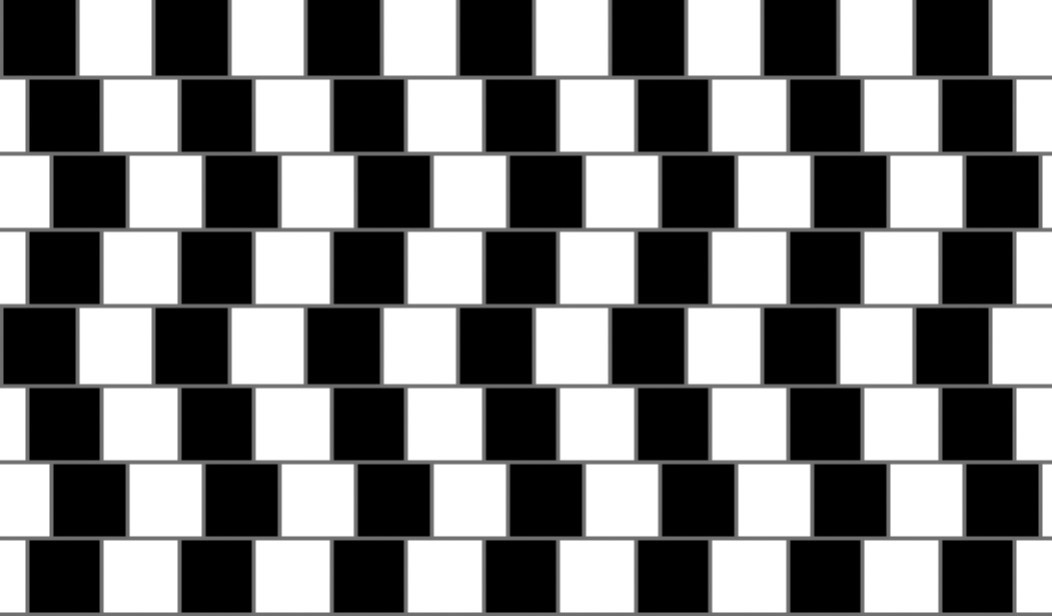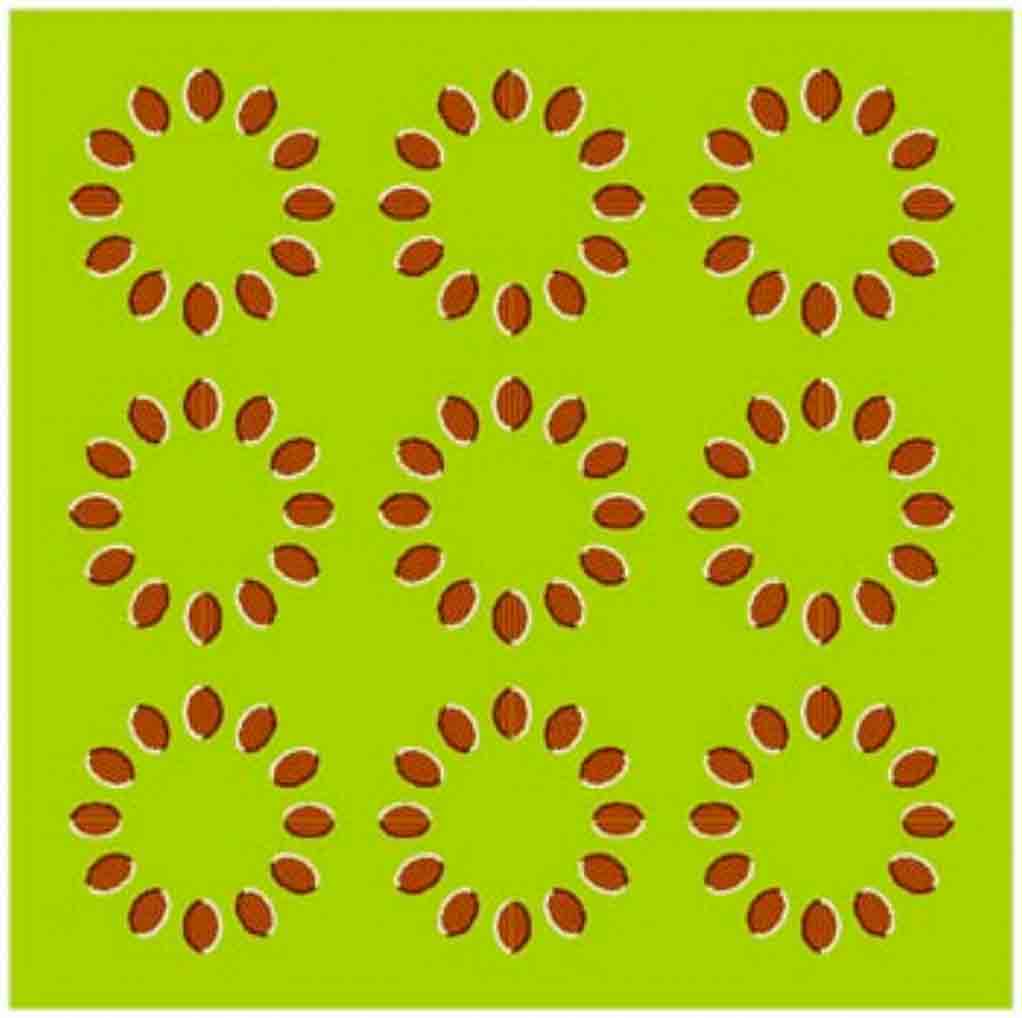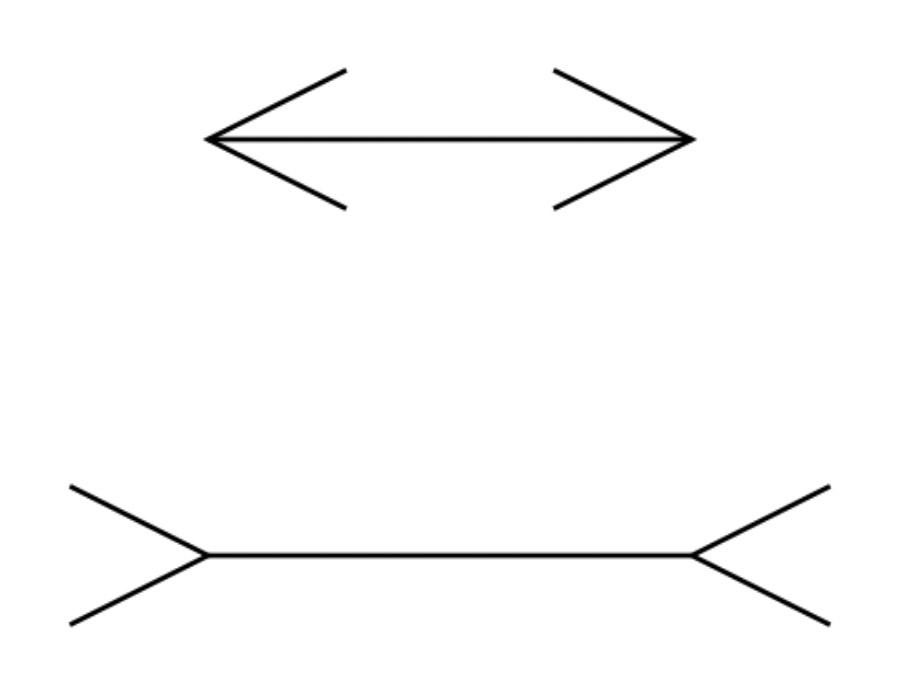Don’t think too hard about any of these – just enjoy being wowed at how your brain works (or doesn’t!) while you sit back and wait for the explanations!
#6. Are the squares inside the blue and yellow squares all the same color?

Photo Credit: Sharp Brains
Continue reading when you’re ready to for an explanation!
#6. Are the squares inside the blue and yellow squares all the same color?

Photo Credit: Sharp Brains
Yes.
They seem different because you perceive colors differently depending on their relation to adjacent colors.
Continue reading to check out another illusion.
#5. Are the horizontal lines straight or crooked?

Photo Credit: Sharp Brains
Continue reading when you’re ready to for an explanation!
#5. Are the horizontal lines straight or crooked?

Photo Credit: Sharp Brains
The lines are straight.
The vertical zigzag patterns disrupt our horizontal perception.
Continue reading to check out another illusion.
#4. Are the circles static or moving?

Photo Credit: Sharp Brains
Continue reading when you’re ready to for an explanation!
#4. Are the circles static or moving?

Photo Credit: Sharp Brains
The circles are static.
This is because of the cognitive effects and the way color contrasts interact with shape position.
Continue reading to check out another illusion.
#3. How many legs does this elephant have?

Photo Credit: Sharp Brains
Continue reading when you’re ready to for an explanation!
#3. How many legs does this elephant have?

Photo Credit: Sharp Brains
There is no answer, really, because of an effect known as the subjective or illusory contour – shapes are created by those around it even though they’re not drawn at all.
Continue reading to check out another illusion.
#2. Are the two horizontal lines the same length?

Photo Credit: Sharp Brains
Continue reading when you’re ready to for an explanation!
#2. Are the two horizontal lines the same length?

Photo Credit: Sharp Brains
They’re the same.
The visual angle gets smaller with distance, so the brain automatically perceives objects at farther distances to be bigger. In addition, there’s something called the Mueller-Lyer illusion, which means the brain perceives the line with outward flaps to be at a farther point than the one with inward flaps.
Continue reading to check out another illusion.
#1. Can you see a baby?

Photo Credit: Sharp Brains
Continue reading when you’re ready to for an explanation!
#1. Can you see a baby?

Photo Credit: Sharp Brains
Look again! It’s in the gray space…
Hope you had a good time!
